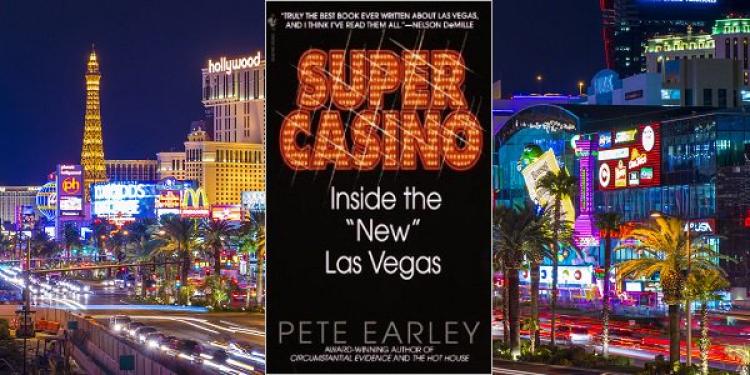The Bookworm Gambler’s Digest: Super Casino
Posted: June 9, 2015
Updated: June 7, 2023

Las Vegas was always the place with tons of action. But how did it emerge to what it is today?
Pete Earley got up one bright sunny day (or so I imagine) and decided to write an extensive guide to the development of Las Vegas. And thank God he did, because this book really is a gripping read of how Vegas became the city it is today. His detailed account will make us gasp with surprise more than one time. Snapping away from the typical pulp fiction clichés, he turns to reality and bends it to his own will.
• Engaging style
• Important moguls in Vegas
• A gambler’s mindset
According to Statista, there were a colossal 41.3 million visitors to Las Vegas in 2014. What an amazing number. But how did Vegas come to be so popular among tourists (who are not only gamblers?) Luxury casinos on nearly every corner make the need for mobile casinos here zero to none. It is, however, astoundingly interesting to see just how fast the city evolved into its current form. The book is based on many colorful characters, all symbols of this city’s true character. On his website, Pete Earley describes why he decided to uncover the secrets of the Las Vegas gambling scene.
The main question is: what is so attractive about gambling and casinos?
Pete Earley describes his thought process perfectly on his own website: “I wanted to discover what draws people there so I went ‘inside’ the Luxor, a billion dollar, pyramid-shaped casino on the Strip. I tell the story through the eyes of the people who I met — a workaholic casino boss, a seasoned blackjack whiz, a showgirl — even a teenage hooker who dreams of someday becoming a casino dealer.” Through his experience, he learnt the difference between “holiday players” and “real gamblers,” and how the whole thing did not really evolve around money, but the excitement and the risk.
Earley talks about his own experience in gambling, too. The effect it had on him and the way he describes it in his book is incredibly interesting. With his aid, you can really see things through a gambler’s eyes: “You are standing there wishing like hell that you hadn’t risk your complete paycheck. You are thinking, “Am I nuts? What am I going to do if I lose!” You are terrified and you are also totally alive.” Maybe this is why Vegas is so popular nowadays; people come here to feel the blood rushing through their veins and to feel alive. This is something that can only be imitated to a certain extent on mobile betting sites.
The real gamblers and those who play on a holiday
Earley recalls something a casino shift manager told him during his stay at the joint: “Most tourists ‘play’ at gambling. They decide before their vacation how much they are going to bet and they keep playing until they lose that amount or a bit more. They are NOT real gamblers. Real gambling is standing at a craps table and shooting the dice with your entire paycheck spread out on the numbers.” Although that might seem scary for some, not being able to eat for weeks or pay the bills, real gamblers take a chance and roll the dice. Earley’s descriptions prove to us just how daring a gambler can be when things come down to taking action.
The book, however, is not only about gamblers and their bold acts. It is an homage to how Las Vegas grew from a city known for the Rat Pack era to a holiday destination for families all over the world and people who wish to spend time playing in US poker rooms. He presents to us a whirlwind of violent mobsters and breath-taking live shows loved by audiences filled with children. He mentions famous characters without whom this city wouldn’t have been able to grow and develop at such a head spinning pace, like Steve Wynn and Howard Hughes. He really provides us with a global perspective on how Vegas become what it is today, and he does this in an entertaining and engaging style.












